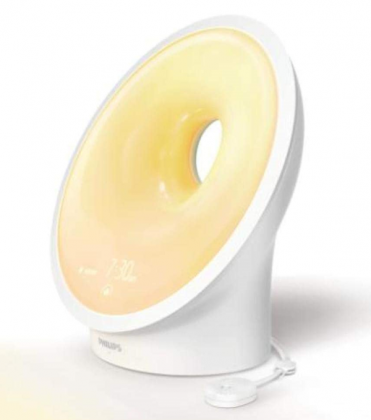

You can use both sunset and sunrise options to decrease/increase your light’s brightness over ten settings over a period of either 10, 20 or 30 minutes. Looking for a light alarm that won’t break the bank? The Light Curve Wake-up Light from Groov-e fills that niche, with a few nifty extra touches. If you’re willing to forgo some of the light alarm features a dedicated product will have, the ability to double up as a SAD lamp makes this a great hybrid option for someone who wants to try out different forms of light therapy. It does need to be plugged in all the time, but because it’s so compact, you can move it around your home easily to use its SAD lamp functionality. The adjustable stand makes it easy to position it towards your face for the greatest effect. (Bear in mind that the beeping alarm isn’t particularly soothing.)įor light therapy, you can choose brightness (up to 10,000 lux) and timer settings. You can set a beeping alarm if you want, but you can’t choose any other audio options as you can on dedicated wake-up lights. The blue-enriched white LEDs simulate natural daylight, waking you up gently. The wake-up light has two sunrise options (15 or 30 minutes), along with a snooze function. It’s both a light alarm and a SAD lamp and is rated as a Class IIa medical device. However, once it’s up and running, it’s an excellent product. The alarm can be set to beep or use one of the preset sounds including a steam train (unusual), ping pong (also odd), waves (more conventional), or the inbuilt FM radio.Īnnoyingly, if you turn it off at the mains all the settings reset to factory, and the buttons on the unit mean it’s fiddly to set up. However, you can set the alarm at the end of that time period if you don’t trust you’ll wake up using the light alone. We opted for the maximum brightness scale over 30 minutes and found we woke up naturally. If you’ve been diagnosed with SAD, you’ll probably still want a dedicated SAD light box, but a light alarm is a handy complement to it, giving you an energy boost when you might need it the most. While it’s primarily sold as a wake-up alarm, it’s also medically certified for light therapy purposes. It has mixed LEDs that shine combinations of white, orange and red to create a realistic sunlight effect that isn’t too blinding and can increase and decrease gradually over 15-90 minutes, at up to 20 different light levels. It offers granular control over your wake up and bedtime routines, with a mixture of sounds and light settings at your disposal. The Bodyclock Shine 300 is a fully featured light alarm from Lumie. This alarm is on the more expensive side, but with good reason. But if you can, this is about as good as light alarms get. Beyond that, there are modern touches throughout: tapping the top to snooze, a dedicated low-intensity light if you wake up in the middle of the night, FM radio, AUX input if you want to fall asleep to sounds from your phone, and even a USB-A slot to charge your phone.Īt the end of the day, this is an expensive alarm, with a price tag that not everyone can justify. In addition to a sunset mode, there’s a light-guided breathing mode to help you to fall asleep. However, you can’t schedule them for specific days, so you’ll have to remember to switch off your weekday alarm when Saturday rolls around. You can save two different alarm presets. Instead of physical buttons, there are simple touchscreen controls built into the light itself, which you can use to customise your sunrise and sunset settings, with a range of light intensities, timings, and soothing noises from birdsong to temple gongs. Still, we think it’s worth it for the feature set and design. This device (previously known as the Somneo) is arguably the best light alarm on the market – that is, if price is not a factor.


 0 kommentar(er)
0 kommentar(er)
